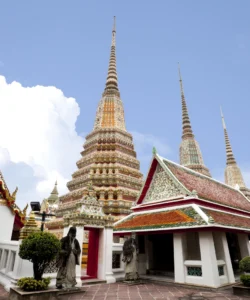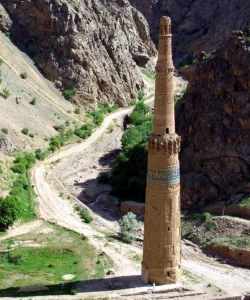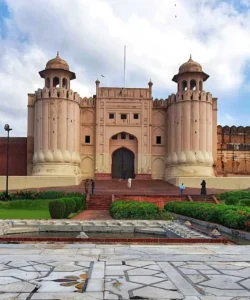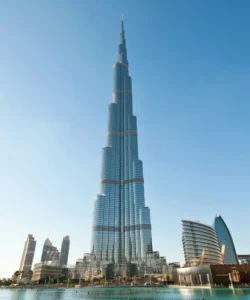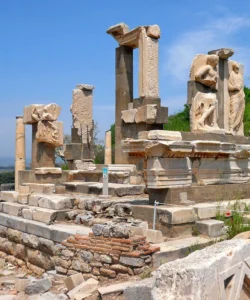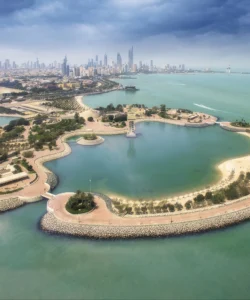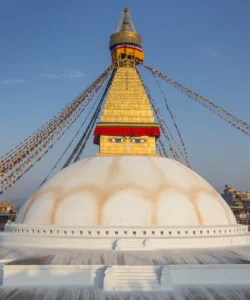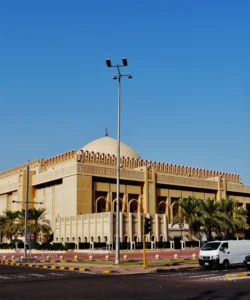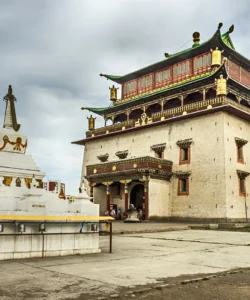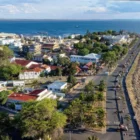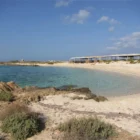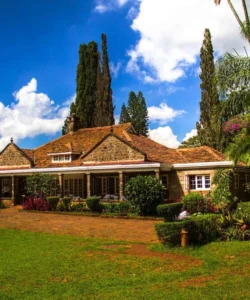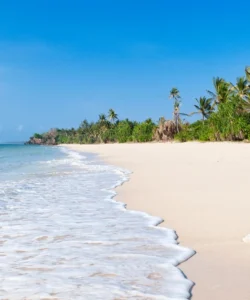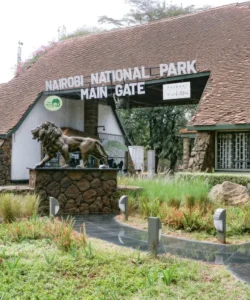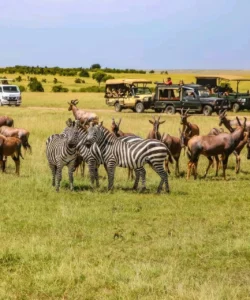The Red Fort, or Lal Qila (meaning “Red Fort” in Hindustani), is a magnificent historic fortress located in Old Delhi, India. Commissioned by the Mughal Emperor Shah Jahan in 1639, it served as the primary residence of the Mughal emperors for nearly 200 years, becoming the heart of his new capital, Shahjahanabad (now known as Old Delhi). Its imposing red sandstone walls give it its distinctive name and make it one of India’s most iconic landmarks.

Name: Red Fort (Lal Qila)
Address: Netaji Subhash Marg, Chandni Chowk, New Delhi, Delhi 110006, India.
It is situated at the eastern end of Chandni Chowk, a historic market area in Old Delhi, and once overlooked the Yamuna River (which has since receded).
How to Get There:
The Red Fort is a major tourist attraction and is well-connected within Delhi’s extensive transport network:
- By Metro (Recommended): The most convenient way. Take the Delhi Metro’s Violet Line directly to Lal Qila Metro Station, which is just a 2-minute walk from the fort. Alternatively, Chandni Chowk Metro Station (Yellow Line) is also nearby (about a 15-minute walk or short rickshaw ride).
- By Auto-rickshaw/Cycle-rickshaw/E-rickshaw: Easily available throughout Delhi and can drop you off at the fort’s entrance.
- By Bus: Numerous DTC (Delhi Transport Corporation) bus routes serve the Red Fort area.
- By Taxi/Ride-Sharing (Uber/Ola): Convenient for direct travel from any part of Delhi.
- From New Delhi Railway Station (NDLS): It’s about a 15-20 minute auto-rickshaw or taxi ride.
- From Indira Gandhi International Airport (DEL): Approximately 13 km, taking 45 minutes to an hour by taxi or via the Airport Express Metro to New Delhi Railway Station, then onward transport.
- Entrance Tickets: Tickets can be purchased online (recommended to avoid queues) or at the ticket counters near the various gates. There are separate fees for Indian citizens/SAARC/BIMSTEC nationals and other foreign visitors.
- Closed Day: The Red Fort is closed on Mondays.
Landscape and Architecture:
The Red Fort is a sprawling fortress-palace complex, demonstrating the zenith of Mughal architecture under Shah Jahan, blending Persian, Timurid, and indigenous Indian architectural styles.
- Massive Red Sandstone Walls: The fort is defined by its colossal red sandstone walls, which are between 18 and 33 meters (59-108 feet) high and stretch for approximately 2.4 kilometers (1.5 miles), enclosing a vast area of 255 acres. These walls are adorned with intricate carvings and feature numerous turrets and bastions.
- Irregular Octagonal Shape: The fort’s overall plan is an irregular octagon, with its two longer sides on the east (facing the river) and west. This asymmetrical layout was partly due to its integration with the older Salimgarh Fort.
- Lahori Gate and Delhi Gate: The two main gateways are the Lahori Gate (the primary public entrance on the west, facing Chandni Chowk) and the Delhi Gate (on the south, used for ceremonial processions). Both are grand and imposing structures. The Lahori Gate is particularly famous as the spot where the Prime Minister of India hoists the national flag on Independence Day.
- Chatta Chowk (Covered Market): Just inside the Lahori Gate is the Chatta Chowk, a unique vaulted arcade that once served as an exclusive market for the imperial household. Today, it still functions as a vibrant bazaar selling handicrafts and souvenirs.
- Diwan-i-Aam (Hall of Public Audience): A large, open-sided hall made of red sandstone, where the Emperor held daily public audiences to address common citizens and hear their petitions. It features numerous pillars and a white marble canopy where the Peacock Throne (now lost) once stood.
- Diwan-i-Khas (Hall of Private Audience): A more opulent and smaller pavilion made of white marble, where the Emperor held private meetings with ministers and nobles. It was once richly decorated with precious stones and a silver ceiling, embodying the famous Persian couplet inscribed here: “If there be a paradise on Earth, it is this, it is this, it is this.”
- Rang Mahal (Palace of Colors): A beautiful palace (originally named Imtiyaz Mahal) with intricate painted decorations and a marble basin with an ivory fountain, once part of the imperial seraglio and residence of the Emperor’s wives and mistresses. A water channel, the Nahr-i-Bihisht (Stream of Paradise), once flowed through this and other royal pavilions.
- Moti Masjid (Pearl Mosque): A smaller, exquisite white marble mosque added later by Emperor Aurangzeb for his private use, known for its three domes and delicate carvings.
- Hayat Bakhsh Bagh (Life-Giving Garden): A large, formal Mughal garden, originally with flowing water channels and pavilions, representing the Persian Charbagh style. While altered over time, it offers serene green spaces within the fort.
- Other Structures: The complex includes various other buildings such as the Hammam (royal baths), Mumtaz Mahal (now a museum), and the octagonal Muthamman Burj (from where the emperor appeared to his subjects).
What Makes It Famous:
- Symbol of Indian Sovereignty: The Red Fort holds immense national importance. Every year on August 15th (Independence Day), the Prime Minister of India hoists the national flag from its Lahori Gate and delivers a nationally televised address, a tradition that began in 1947. This makes it a powerful symbol of India’s independence and pride.
- UNESCO World Heritage Site: Designated a UNESCO World Heritage Site in 2007, it is recognized for its architectural grandeur, historical significance as a seat of Mughal power, and its fusion of diverse architectural styles.
- Pinnacle of Mughal Architecture: Built by Shah Jahan, the architect of the Taj Mahal, the Red Fort represents the zenith of Mughal creativity and design, showcasing refinement, opulence, and a sophisticated understanding of urban planning within a fortress.
- Historical Significance: It was the seat of the Mughal Empire for almost two centuries, witnessing significant historical events and the eventual decline of the empire. Its past is intertwined with India’s rich history.
- Vast Scale and Intricate Details: The sheer size of the fort, combined with the intricate marble inlay work, delicate carvings, and the grandeur of its various halls and palaces, makes it an awe-inspiring architectural marvel.
- Sound and Light Show: The fort hosts an evening Sound and Light Show that narrates the history of the Mughal Empire and the fort itself, bringing its past to life.
Differences from Some Other Wonders:
- Fortress-Palace and Capital City Center: While the Taj Mahal is a mausoleum, and Angkor Wat is a temple complex, the Red Fort is primarily a fortress-palace that served as the central administrative and residential hub for an entire empire’s capital city (Shahjahanabad). Its design reflects both military might and imperial luxury, a different combination than purely religious structures.
- Symbol of Independence: Its unique role in India’s modern history as the site for the annual Independence Day flag-hoisting ceremony gives it a specific political and national symbolic importance not found in other ancient wonders.
- Red Sandstone Dominance: While other Mughal buildings like the Taj Mahal are famous for white marble, the Red Fort’s defining characteristic is its extensive use of red sandstone for its massive outer walls and many internal structures, creating a powerful and distinct visual identity.
- Incorporation of Older Fort: The Red Fort’s design is notably asymmetrical in parts to incorporate the older Salimgarh Fort, demonstrating a unique adaptive planning approach for a new capital.
- Architectural Influence: Its innovative planning and architectural style heavily influenced later Mughal buildings and gardens across India, acting as a direct architectural precursor to subsequent regional styles.
- “Fortress” vs. “Temple” or “Mausoleum”: Its fundamental identity is that of a grand fortified palace, designed for defense, administration, and royal residence, distinguishing it from purely religious structures or monuments of love.
































